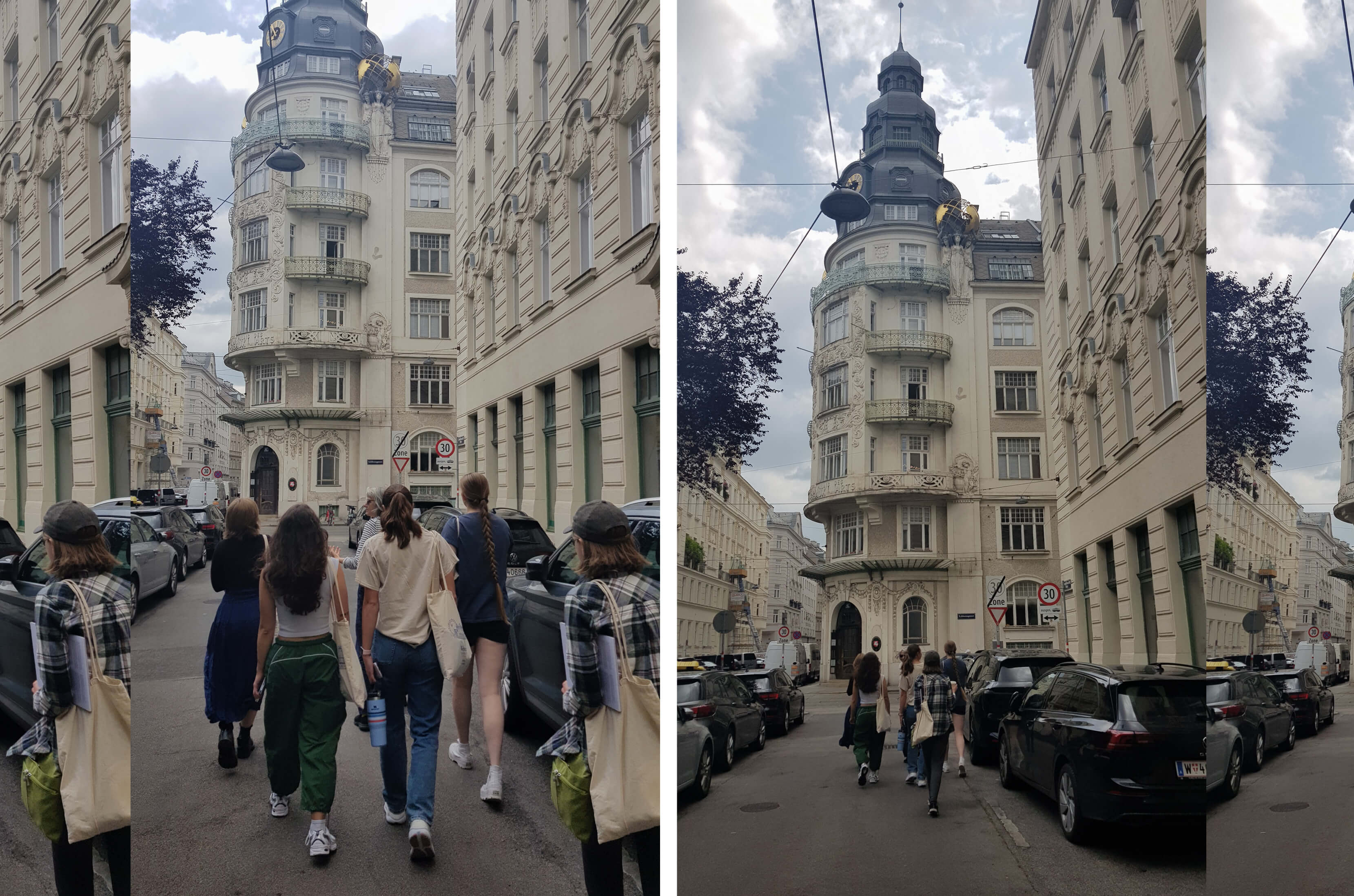

-1985.jpg)

Brother Theodore (born Theodore Gottlieb; 1906-2001), the grandson of Arnold and Rosine Bachwitz (founders of the Palais des Beaux Arts), was an actor and comedian known for rambling, stream-of-consciousness monologues. He described his brand of horror comedy as “Stand-Up Tragedy”, releasing numerous records and performances to a cult following.
Gottlieb worked in the Berlin branch of Bachwitz AG/Chic Parisien, writing essays and articles until 1933 when the rise of Nazism caused him to flee to Switzerland, only to be deported for chess hustling shortly after his arrival. Gottlieb then moved to Vienna, working at the Palais des Beaux Arts building until it was Aryanized in 1938. At the age of 32, Gottlieb was imprisoned in the Dachau concentration camp where he remained until he signed over his family’s fortune for ten Reichsmarks. Upon Gottlieb’s release, Albert Einstein, a family friend and alleged lover of his mother (Grete Bachwitz-Lebach), then helped him escape to the United States.
Gottlieb's career as a monologuist, comedian, and actor began in California in the late 1940s, with a bit part in Orson Welles's 1946 movie The Stranger. In the 1950s, he moved to New York City, where his monologues as ‘Brother Theodore’ began to attract a cult following, eventually reaching a wider audience through regular television appearances (The Merv Griffin Show, The Tonight Show Starring Johnny Carson, etc.).
Brother Theodore stopped performing in the mid-1970s, only to be coaxed out of retirement in the 1980s to experience a resurgence with multiple appearances on David Letterman’s Late Night Show, more voicework, roles in television, and movies until his death. In 2007, the documentary, ‘To My Great Chagrin: The Unbelievable Story of Brother Theodore’ was released and screened at the MOMA, including commentary and interviews with Woody Allen, Penn & Teller, and Eric Bogosian amongst others.
-
An artist and researcher based in Berlin, Christopher Dake-Outhet connects seemingly disparate research methodologies, aesthetic regimes and media in order to explore contemporary methodologies and practices of being.
For the PdBA collection, Dake-Outhet re-imagines a new album from Brother Theodore—produced using a vocal model trained by Theodore’s voice with AI and deep learning frameworks. In true Theodorian fashion, it’s accompanied by him reading his NY Times obituary from 2001 (the recital of which uses a model trained by a collection of vocal intonations over the course of his life). The content of the album is generated contextually with the help of Generative Pre-trained Transformers—using datasets composed from transcripts of Theodore’s performances and monologues.
In the PdBA’s narrative of archival experimentation, A Very Bad Time to Be Alive probes the boundaries and possibilities of (re)generative cultural production as a neo-archival artifact. As the cyclical and increasingly automated barriers around cultural production evolve with the introduction of novel technological tool sets, a renewed dilemma of ownership and authorship emerges. Using the context of the PdBA’s re-historized archive as a method of reclamation and orientation, Brother Theodore returns to yell at us from the grave.
Format - Interactive Website with Audio, Limited Edition Vinyl Record
Material - Synthesized Voice, Archival and AI Generated Images
Dimensions - Responsive, Square, Expanding
Audio Production / Arrangement - Juniper Foam
AI Training Material - Quadrupedalism (Various), The Willow Landscape, I’m Just Plain Folks, Brother Theodore Monologues, Brother Theodore Confessions, Interview by Bob Claster, The Curse of the Toad, Introduction and Berenice, Live Set (3-5-83), Tear from a Glass Eye..with a Tongue of Madness, Foodism
Frameworks / Software - Tacotron 2, GPT Models (Various), DALL·E 2, Stable Diffusion
Artist - Christopher Dake-Outhet
Year - 2022
Artistic Director - Seth Weiner
Thanks - Brother Theodore
The project is funded by the Kulturabteilung Stadt Wien (MA-7)

A Little History of the Wireless Icon (Eine kleine Geschichte des Wireless Icons) is an introduction into the iconographic history of wireless technologies.
English Version / German Version

















with_BG%20Color_16%2002%2019_Moment_crop.jpg)


















































-Still-03.jpg)
-Still-01.jpg)























.jpeg)

























